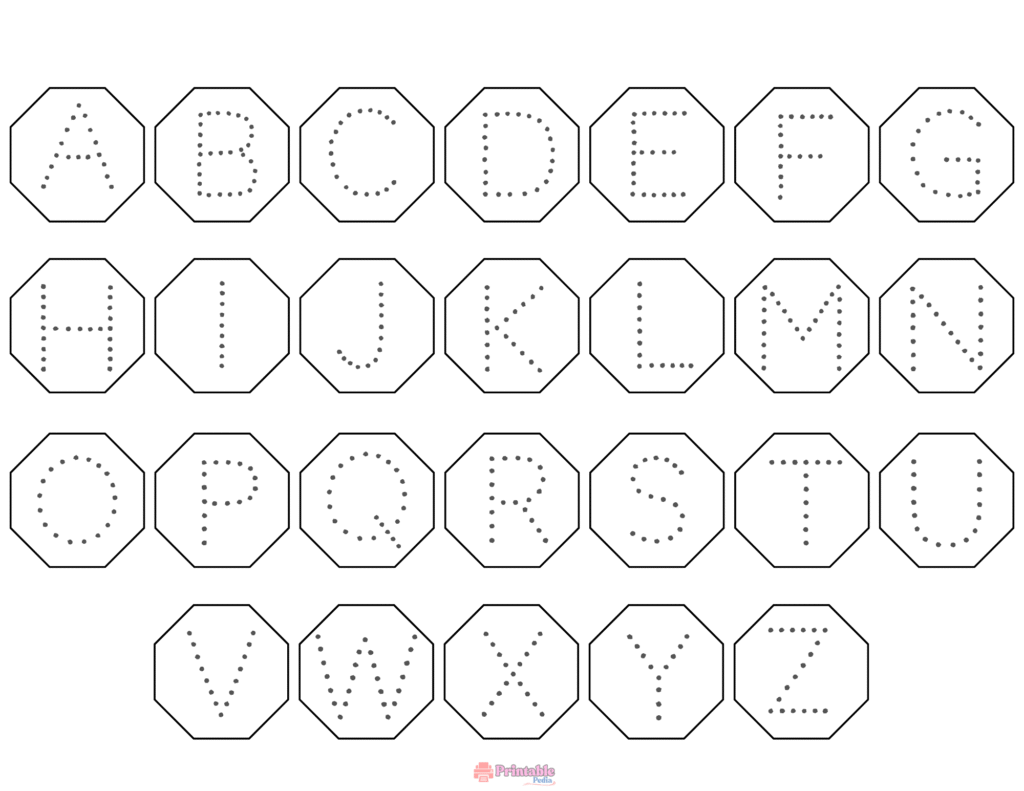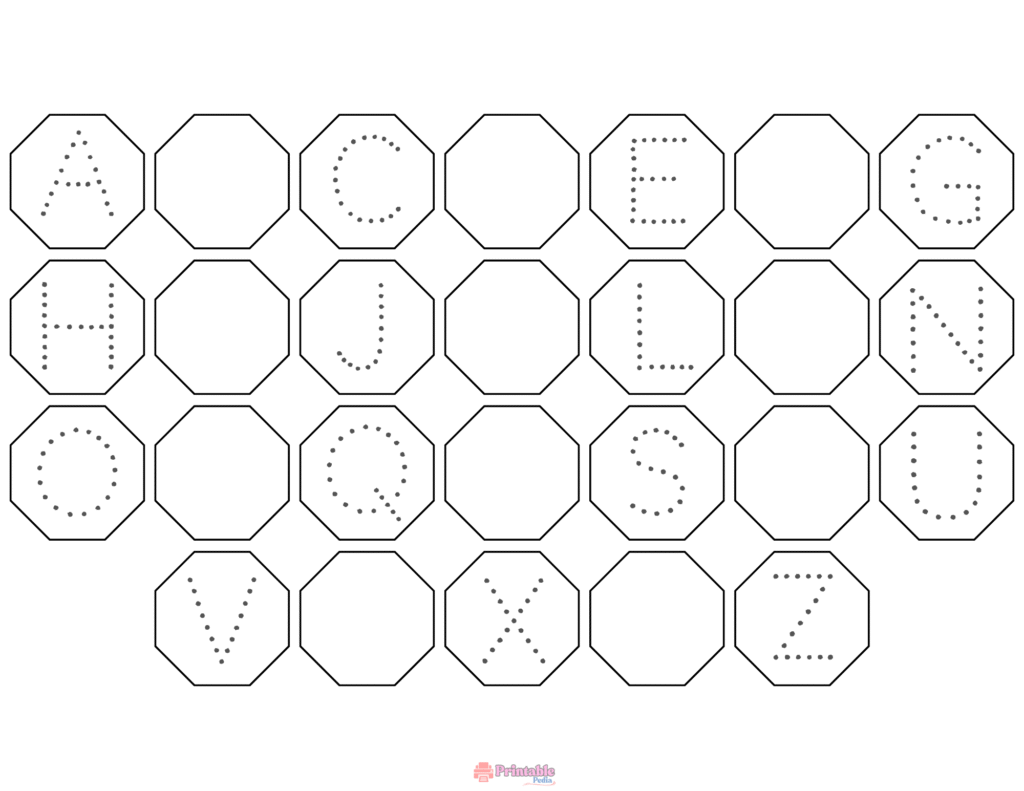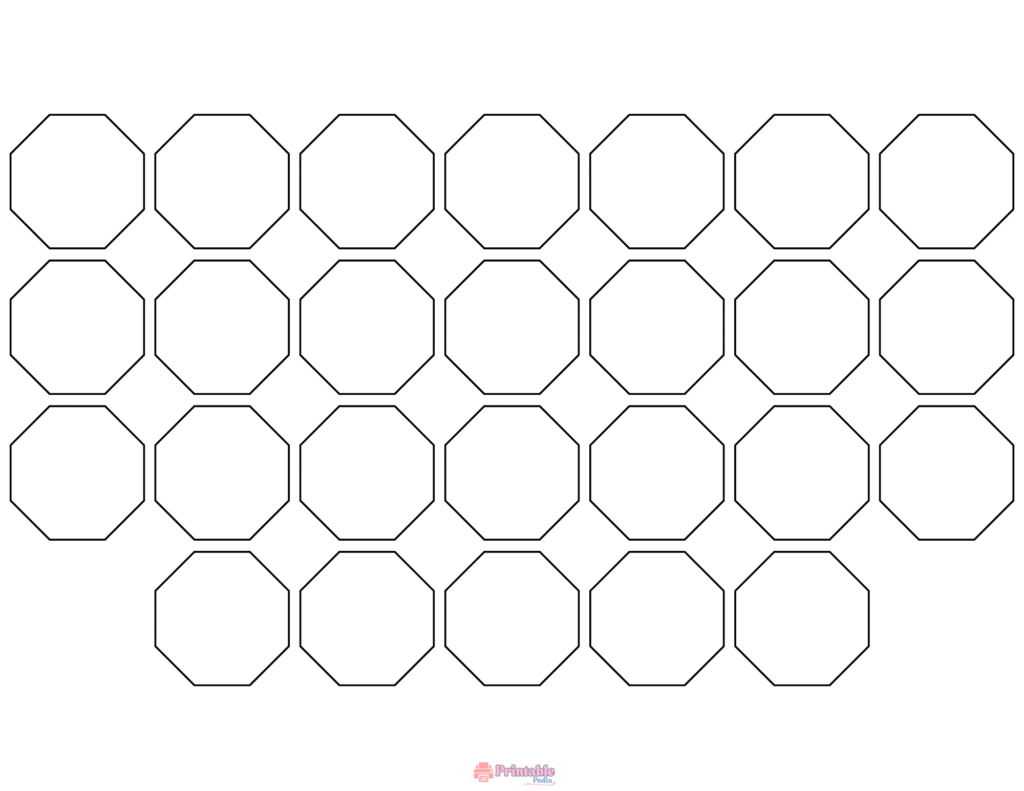Learning letters is one of the first significant steps for young kids. It builds the foundation for writing, reading, and even speaking clearly. The best way to start? Simple, hands-on practice.
This post gives you four printable worksheets that help kids trace uppercase letters. They’re free. They’re easy to use. And they’re made for real progress – whether you’re teaching at home or in a classroom.
Each sheet has a purpose. One gives the full alphabet, two offer selected letter sets, and the last one is blank so you can customize it however you like.
Full Uppercase Alphabet Tracing Worksheet (A-Z Dotted Letters)

This sheet includes all 26 capital letters. Each is shown with dotted lines so children can follow the shapes with a pencil or crayon. It’s perfect for kids learning how letters look and feel. The dotted format guides their hands, and the clear layout keeps it simple.
Great for preschool and kindergarten. Also helpful for therapists or parents working with kids on fine motor control.
Alphabet Tracing Worksheet – Set 1 (Selected Uppercase Letters)

This worksheet focuses on a smaller group of letters: A, C, E, G, H, J, L, N, O, Q, S, U, V, X, and Z. These letters have softer curves and broader strokes. It’s a smart way to help kids slow down and focus. Instead of giving them the whole alphabet, you let them master a few at a time.
Many teachers use this type of sheet to match early phonics lessons. Parents can also use it for targeted review at home.
Alphabet Tracing Worksheet – Set 2 (Alternate Uppercase Letters)

This sheet features different letters: B, D, F, I, K, M, P, R, T, V, X, and Z. These letters tend to have more straight lines and angles, which helps build control and rhythm in handwriting. It’s helpful once your child has some confidence with curved letters. This sheet adds variety. It challenges their hand in a good way.
You can print it out during the week as a follow-up to Set 1. It keeps practice short but focused.
Blank Alphabet Tracing Template – For Practice

The sheet has empty shapes, ready for anything you want to put in. You can write letters, numbers, sight words, and even shapes for tracing. Teachers can make quick, personalized sheets. Parents can use it to practice names, simple words, or whatever their child needs most.
Because it’s blank, you can print it over and over. Change it each time. That keeps things fresh and fun.
How to Use These Alphabet Worksheets
Pick one sheet to start with. Let your child trace slowly. Make sure they follow the lines and stay steady. Keep the sessions short. Just ten minutes can go a long way. You don’t need a lot of time – you need consistency.
Laminating the sheets helps if you want to reuse them. A dry-erase marker turns these into daily tools you don’t have to reprint.
Try printing a few at once, leaving them on the table, and letting the kids come back to them on their own.
Why These Tracing Worksheets Help Early Learners
Tracing does more than teach kids how to write. It helps their hands grow stronger, teaches them to pay attention, and shows them how to follow steps.
Each time they trace a letter, they learn its shape. They start to remember it. Their writing gets better without needing long lessons.
Kids also gain confidence. When they finish a page, they feel proud, and that feeling matters. It helps them keep going.
These worksheets are simple on purpose. No distractions. Just letters and quiet practice.
Download All Worksheets in One Click
All four worksheets are in PDF format, so you can access them in one place. Just click and save. No forms. No logins. They’re ready to print right away.
Use them at home. At school. Anywhere you need a quiet, helpful activity. You can print each one more than once, or you can keep them on your tablet if you prefer digital writing apps.
Frequently Asked Questions:
Can I use these worksheets for homeschooling?
Yes, you can. They work well for home lessons. They are simple to use and easy to fit into your daily routine.
Are these all uppercase letters?
Yes. Every worksheet in this set is for uppercase letter practice.
Do I need special paper?
No. Just use regular printer paper. If you want to reuse the sheets, laminate them and use dry-erase markers.
Can I use them on a tablet?
Yes. If you have a stylus and a writing app, your child can trace the letters on the screen. It works best with apps like GoodNotes or Notability.
How much time should kids spend on tracing?
Start with ten minutes a day. That’s usually enough for young learners. Keep it short so they don’t get tired.
What age are these worksheets made for?
Most kids start tracing between ages 3 and 6. These worksheets are perfect for that range.
What can I do with the blank one?
Write in your letters. Or numbers. Or shapes. It’s flexible. Use it for whatever your child needs that day.
Can teachers use them in class?
Yes. These are classroom-friendly. Print them for centers, morning work, or handwriting time.
Do I need any extra tools?
A pencil works fine. But if you want to reuse them, try markers and a dry-erase surface.
